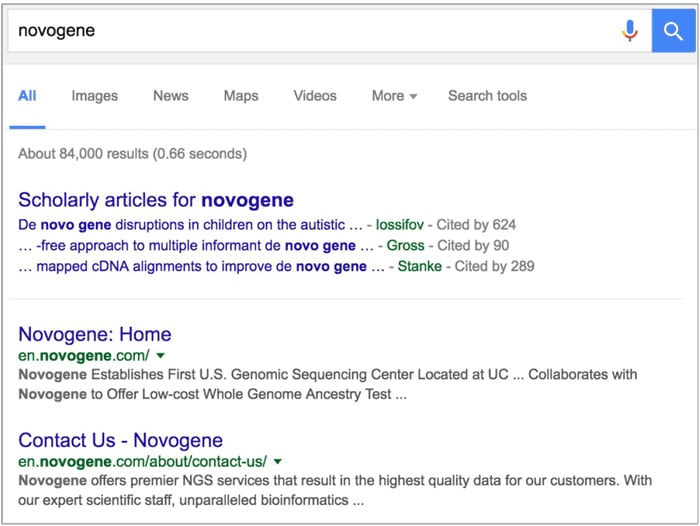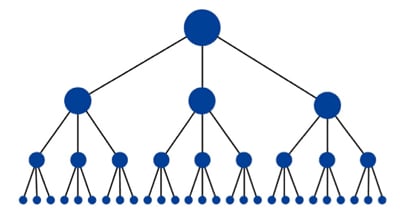
Sign Up Form
Join over 2,500 top life science marketing directors who receive weekly digital marketing tips.
SEO Sign Up Form Mobile
Join over 2,500 top life science marketing directors who receive weekly digital marketing tips.
SITE ARCHITECTURE AND INTERNAL LINKING
Over the past few years, one of the most overlooked areas for an effective SEO strategy is the site’s architecture. This is one of the most crucial aspects of your site’s SEO performance, however most don’t understand exactly what type of site structure influences SEO.
At the core of site structure is a great user experience. If you remove all of the design elements, colors, branding, fonts, graphics, and white space, all you are left with is structure. Have you noticed that some certain websites have an intuitive feel to it? That’s because these companies have continually optimized the user experience that is logically and cognitively satisfying to users according to their behavior flow.
In turn, because the site is more satisfying to users, search engines will be able to index and rank it better as well. Google’s algorithm uses information from searchers to rank your website. If your site has poor CTRs, high bounce rates, low engagement, it will not perform well in the SERPs. By contrast, when a user finds a site that they like, spends a lot of time on it, and finds what they are looking for, Google will rank this one higher. For more resources on website UX/UI, please check out Supreme Optimization’s posts on ‘6 Web Design Trends in 2016 for the Life Sciences Industry’ and ‘5 Challenges Life Science Companies Face During Web Development and Solutions’
47. When you Google your brand name, does your website have sitelinks?
A good site structure will provide your site with sitelinks.

Fig 21. Novogene’s site architecture was not optimized. Google is unable to effectively determine sitelinks which result is lower CTR.
However, you cannot simply tell Google what to place under your site links. Instead, Google algorithmically awards your website with better sitelinks depending on the site structure. With poor site structure, it is likely your site will not receive site links, or they will be incorrect. For Novogene, even though their website has been around for a long time, when searched, no sitelinks are returned.
48. If you haven’t developed your website yet, plan out the hierarchy before developing the site.
Some web development agencies will help guide you through this process, otherwise will ask that you provide a wireframe and structure for them. Lucidcharts and many other wireframing websites can help you establish a visual architecture prior to development. The general hierarchy should look like the flow to the right.

Fig 22. A great site architecture diagram courtesy of Moz.com. Logical for users and search engines.
49. Make your hierarchy logical.
Do not reinvent the wheel, or overthink this process. Simplicity is key. If you sell antibodies, look at the most successful antibody company as an example. It’s likely they’ve already done the hard work of building a highly intuitive website for customers. Each main category should be unique and distinct. Each subcategory should related to the main category. For products, they should have a parent family page, and the child products listed within that family.
50. Keep the main categories between two and seven.
Unless you are Amazon.com, you should keep it simple and combine categories when possible to increase ranking potential.
51. Try to balance the amount of subcategories within each category.
52. Code your site navigation in HTML or CSS.
Don’t code in JS, Flash, or Ajax because this limits the crawlers ability to interpret structure.
53. Keep the depth of navigation structure shallow.
Since your navigation structure follows your architecture, you should make sure the pages, especially important ones don’t take more than three clicks to reach every page. With each click deeper down into your website, the higher number of dropoffs there will be (eg. lost customers).
54. Develop a comprehensive internal linking structure.
- This will help user experience as well as search engines more logically understand site hierarchy. Moz’s article on internal links lists three reasons why they are important:
- They allow users to navigate a website.
- They help establish information hierarchy for the given website.
- They help spread link juice (ranking power) around websites.
Each of these is directly tied to creating a tight-knit and well-integrated site structure.
55. Make sure your footer links are duplicates of your header links.
They should not be a block of footer links but instead proper simple navigation.

Fig 23. Advanced Cell Diagnostics does a nice job of properly duplicating their header links in their footer. This provides clarity for navigation.

